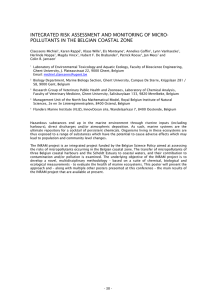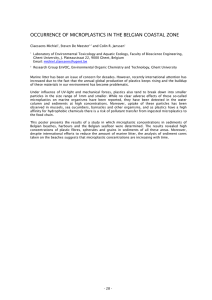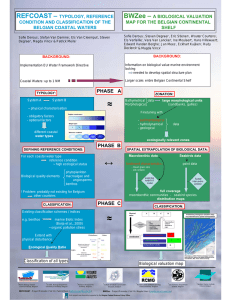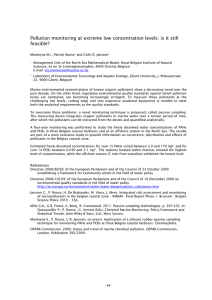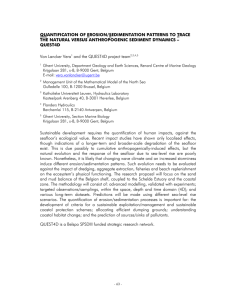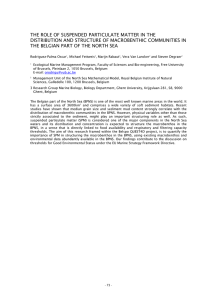Claessens Michiel , Karen Rappé , Els Monteyne
advertisement
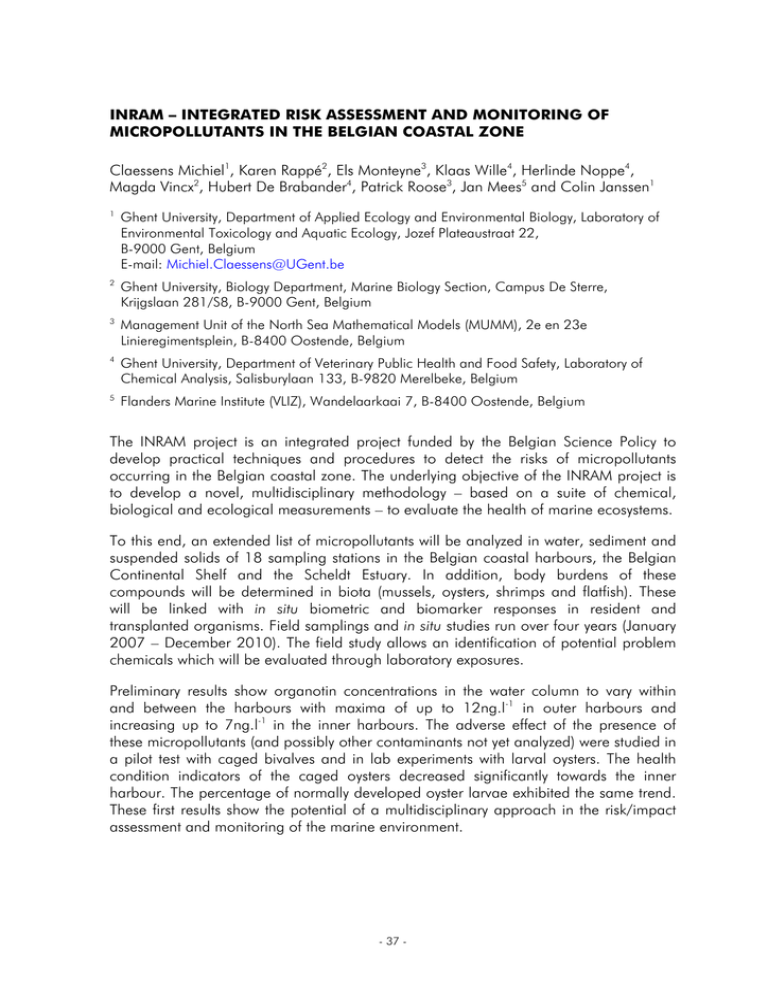
INRAM – INTEGRATED RISK ASSESSMENT AND MONITORING OF MICROPOLLUTANTS IN THE BELGIAN COASTAL ZONE Claessens Michiel1, Karen Rappé2, Els Monteyne3, Klaas Wille4, Herlinde Noppe4, Magda Vincx2, Hubert De Brabander4, Patrick Roose3, Jan Mees5 and Colin Janssen1 1 Ghent University, Department of Applied Ecology and Environmental Biology, Laboratory of Environmental Toxicology and Aquatic Ecology, Jozef Plateaustraat 22, B-9000 Gent, Belgium E-mail: Michiel.Claessens@UGent.be 2 Ghent University, Biology Department, Marine Biology Section, Campus De Sterre, Krijgslaan 281/S8, B-9000 Gent, Belgium 3 Management Unit of the North Sea Mathematical Models (MUMM), 2e en 23e Linieregimentsplein, B-8400 Oostende, Belgium 4 Ghent University, Department of Veterinary Public Health and Food Safety, Laboratory of Chemical Analysis, Salisburylaan 133, B-9820 Merelbeke, Belgium 5 Flanders Marine Institute (VLIZ), Wandelaarkaai 7, B-8400 Oostende, Belgium The INRAM project is an integrated project funded by the Belgian Science Policy to develop practical techniques and procedures to detect the risks of micropollutants occurring in the Belgian coastal zone. The underlying objective of the INRAM project is to develop a novel, multidisciplinary methodology – based on a suite of chemical, biological and ecological measurements – to evaluate the health of marine ecosystems. To this end, an extended list of micropollutants will be analyzed in water, sediment and suspended solids of 18 sampling stations in the Belgian coastal harbours, the Belgian Continental Shelf and the Scheldt Estuary. In addition, body burdens of these compounds will be determined in biota (mussels, oysters, shrimps and flatfish). These will be linked with in situ biometric and biomarker responses in resident and transplanted organisms. Field samplings and in situ studies run over four years (January 2007 – December 2010). The field study allows an identification of potential problem chemicals which will be evaluated through laboratory exposures. Preliminary results show organotin concentrations in the water column to vary within and between the harbours with maxima of up to 12ng.l-1 in outer harbours and increasing up to 7ng.l-1 in the inner harbours. The adverse effect of the presence of these micropollutants (and possibly other contaminants not yet analyzed) were studied in a pilot test with caged bivalves and in lab experiments with larval oysters. The health condition indicators of the caged oysters decreased significantly towards the inner harbour. The percentage of normally developed oyster larvae exhibited the same trend. These first results show the potential of a multidisciplinary approach in the risk/impact assessment and monitoring of the marine environment. - 37 -
